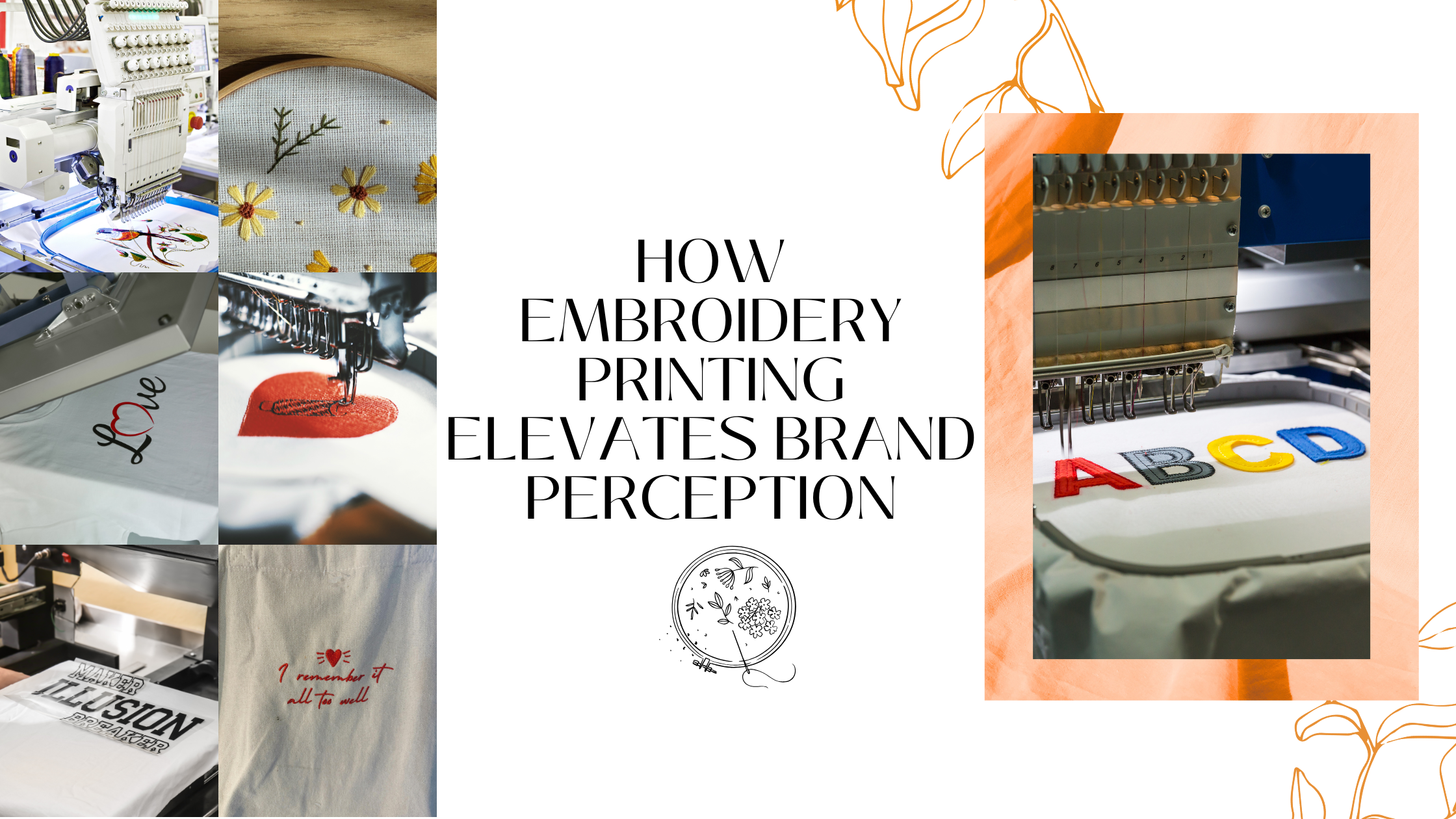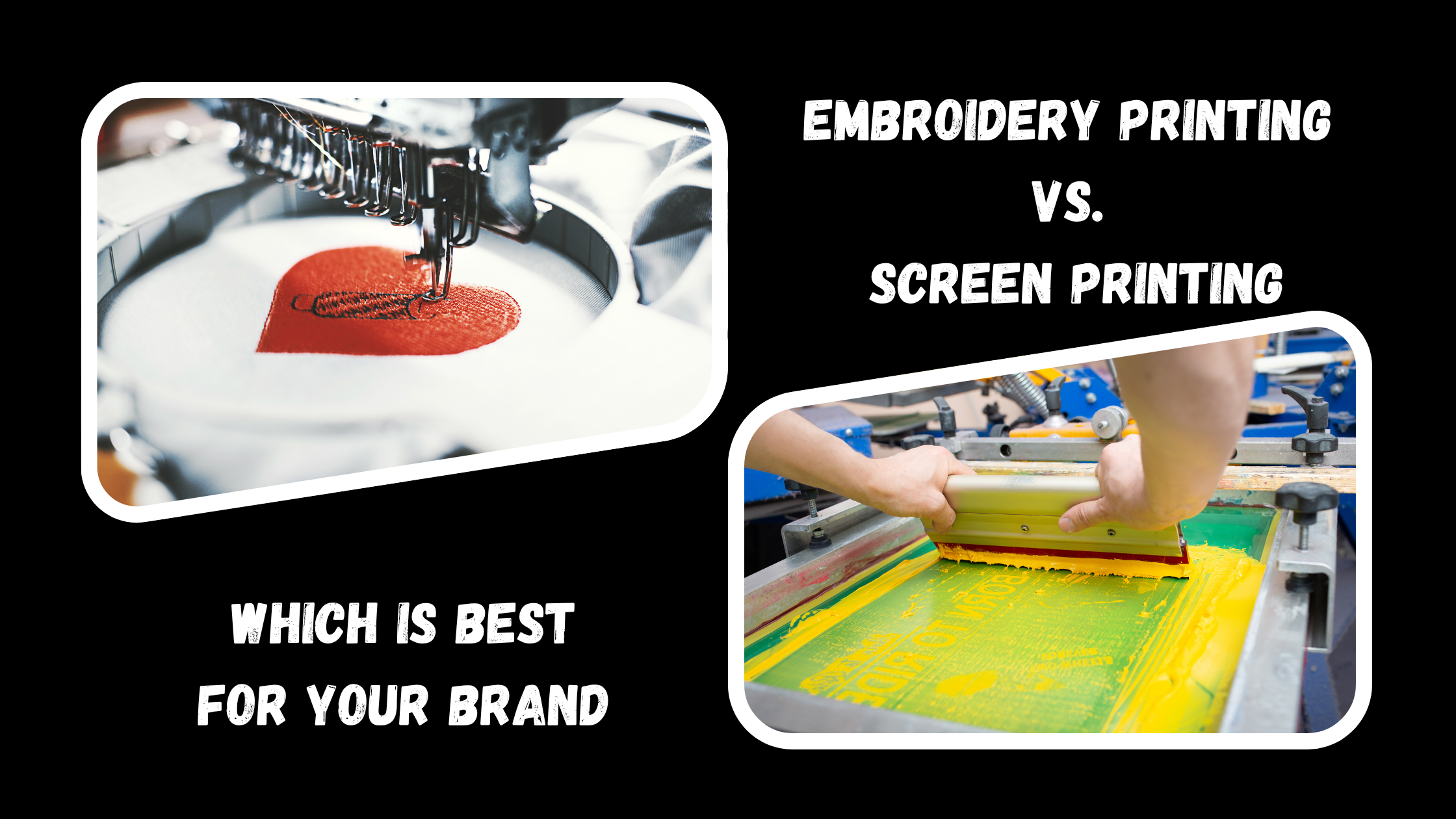Introduction
In the print-on-demand (POD) industry, quality and brand perception are key factors for success. Embroidery printing is a premium technique that adds texture, durability, and a professional feel to apparel and accessories.
Unlike standard printing methods, embroidery transforms simple designs into tactile, sophisticated products. This elevates brand perception, builds customer trust, and allows POD businesses to charge premium prices.
This guide explains how embroidery printing enhances brand value, best practices, trends, and examples of successful POD businesses using this technique.
1. What is Embroidery Printing?
Embroidery printing uses threads stitched into fabric to create designs. It differs from ink-based printing, providing a raised texture and long-lasting durability.
Key Features:
- Works on t-shirts, hoodies, jackets, caps, tote bags, and more.
- Adds premium and professional aesthetics.
- Suitable for logos, text, and simple graphics.
Industry Insight: Many POD brands use embroidery to differentiate themselves in a competitive market, offering products that feel premium and durable.
2. How Embroidery Elevates Brand Perception
1. Premium Appearance:
- Embroidered designs signal quality and attention to detail.
- Customers perceive embroidered products as more valuable than standard printed items.
2. Enhanced Durability:
- Threads are more resistant to fading and washing compared to printed ink.
- Ideal for apparel that customers will wear repeatedly.
3. Professional Branding:
- Embroidery works well for corporate merchandise, team uniforms, and branded apparel.
- Creates a polished, high-end look that builds trust.
Example: A POD brand selling custom embroidered hoodies attracted corporate clients for employee gifts, boosting brand credibility.
3. Popular Embroidery Printing Applications
1. Apparel:
- Hoodies, jackets, t-shirts, and polo shirts.
- Embroidered logos, initials, or patterns elevate everyday wear.
2. Accessories:
- Caps, beanies, and tote bags.
- Perfect for lifestyle merchandise or promotional giveaways.
3. Corporate and Event Merchandise:
- Embroidered uniforms, banners, and giveaways enhance professionalism.
Tip: Combining embroidery with other printing techniques like DTF or screen printing allows for hybrid designs and expanded product offerings.
4. Benefits for POD Businesses
1. Differentiation:
- Stand out in a crowded market by offering premium embroidery products.
- Appeals to customers seeking quality over low-cost alternatives.
2. Higher Profit Margins:
- Customers are willing to pay more for embroidered products due to perceived value.
- Offers opportunity for limited-edition, high-end collections.
3. Brand Loyalty:
- Durable, premium-quality products encourage repeat purchases.
- Builds long-term trust and recognition.
4. Versatility:
- Embroidery works on various fabrics, including cotton, polyester, denim, and blends.
- It can be combined with other printing methods for unique designs.
Case Study: A POD lifestyle brand offered embroidered tote bags alongside DTF-printed t-shirts. The premium touch led to higher social media engagement and repeat buyers.
5. Embroidery vs. Other Printing Methods
| Feature | Embroidery Printing | Screen Printing | DTF Printing |
| Durability | Very High | Medium | High |
| Texture | Raised, tactile | Flat | Flat |
| Cost per Unit | Higher (premium) | Low for bulk | Medium |
| Ideal Designs | Logos, text, simple patterns | Bold graphics | Full-color, detailed |
| Fabric Compatibility | Wide (cotton, blends, denim) | Wide | Wide |
Industry Insight: Brands use embroidery to position products as premium while relying on DTF or screen printing for intricate, colorful designs.
6. Best Practices for Embroidery Printing
- Design Simplicity:
- Intricate details may not translate well in thread.
Simplify designs for clarity and longevity.
- Intricate details may not translate well in thread.
- Color Contrast:
- Choose thread colors that contrast with fabric for visibility.
- Avoid overly subtle color combinations that may appear dull.
- Fabric Selection:
- Stable fabrics like cotton, denim, and blends work best.
- Stretchy fabrics require careful handling to avoid distortion.
- Digitize Designs Properly:
- Convert graphics into embroidery-ready files.
- Optimize stitch density for clean, professional results.
- Quality Control:
- Inspect embroidery for thread consistency, alignment, and durability.
Example: A POD cap brand improved product reviews by switching to higher-quality threads and refining digitized designs for embroidery.
7. Marketing Embroidered Products
1. Highlight Premium Quality:
- Use lifestyle photography to showcase texture and detail.
- Emphasize durability and professional look in product descriptions.
2. Social Media Promotion:
- Short videos showing embroidery detail increase engagement.
- Instagram Reels or TikTok clips highlighting stitching and quality attract attention.
3. Bundle Premium Items:
- Pair embroidered apparel with mugs or tote bags for lifestyle bundles.
- Limited-edition collections enhance perceived exclusivity.
4. Corporate Branding:
- Market embroidery for team uniforms, corporate gifts, and branded merchandise.
Industry Insight: Customers are willing to pay a premium for embroidered products due to perceived quality, making it ideal for niche POD markets.
8. Trends in Embroidery Printing 2025
- Hybrid Designs: Combining embroidery with DTF, screen printing, or patches.
- Sustainable Threads: Eco-friendly polyester or organic cotton threads.
- Personalization: Monograms, names, or custom logos.
- Minimalist Premium: Subtle, high-quality embroidery for lifestyle and corporate merchandise.
Example: A POD streetwear brand used embroidered logo patches on hoodies and hats. The premium touch increased brand visibility on social media and drove higher-priced sales.
Conclusion
Embroidery printing elevates brand perception by offering premium quality, durability, and professional aesthetics. It differentiates POD products from mass-produced alternatives and attracts customers willing to pay for quality.
Actionable Takeaways:
- Focus on simple, high-contrast designs for clarity.
- Use quality threads and stable fabrics for longevity.
- Highlight embroidery in marketing to emphasize premium value.
- Combine embroidery with other printing methods for unique products.
- Leverage lifestyle bundles and corporate merchandise to expand revenue.
By integrating embroidery printing into your POD offerings, your brand can stand out in 2025, build customer loyalty, and deliver high-quality products that command premium pricing.





